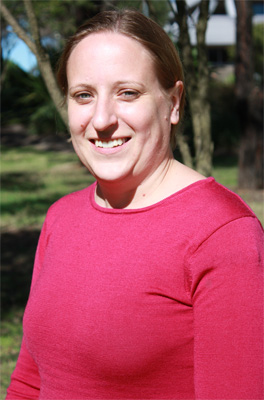Novel Partnership could Transform Breast Cancer Diagnosis

Novel Partnership could Transform Breast Cancer Diagnosis
An innovative University of Sydney research partnership with private enterprise could see a radical change in how breast cancer is diagnosed, with the possibility to improve detection rates.
The partnership is utilising advanced technology made available by Agilent Technologies, a company using novel imaging tools such as elemental bio imaging and microwave imaging, to allow researchers from the University's Charles Perkins Centre and Faculty of Health Sciences to study breast tissue samples in an entirely different way.
The project was recently the recipient of a 2012 Novel Concept Award from the National Breast Cancer Foundation (NBCF). It is the first study of its kind to look at measuring physical properties of breast tissue which could be related to breast cancer risk.
Breast tissue density has been widely recognised as being strongly linked to the risk of developing breast cancer. Currently, the most common approach to determining a woman's breast density is for a radiologist to visually assess the percentage of fibroglandular tissue imaged on a mammogram, and assign it to a category of density from 1-4, which is known as the Breast Imaging Reporting and Data System (BI-RADS) classification system.
Project lead Dr Elaine Ryan said a more accurate and reliable measurement of breast density was urgently required.
'The measurement of breast density using mammogram imaging is inaccurate, subjective and unreliable,'" she said.
'This is due to the measurement of a 3D volume from a 2D representation of the tissue. In addition, mammograms are not being used to help determine any breast cancer risk models, despite the fact it is widely recognised that analysis of breast density data would be a critically important addition to ways of diagnosing the condition."
Dr Ryan said the research project would determine whether measuring the structure and composition of breast tissue, using x-ray fluorescence signals, could be used to accurately measure breast density and predict risk of developing the condition.
'A more accurate measure – that does not depend on the subjective opinion of radiologists – would improve the reliability of breast density estimates for risk prediction and could lead to improved targeted screening programs for high risk women," she said.
The novel experimental approach will combine a measurement of the electron density, trace element content, liquid content and fat cell content, into a model which can be correlated with mammographic breast density measurements.
Dr Ryan said the research team believed this approach could show that glandular tissue structure and composition can provide a direct measure of breast tissue density.
'This in turn has the potential to be able to develop more accurate methods of calculating breast density from conventional mammographic imaging. By developing a better understanding of the structure of dense tissue, better models can be developed which consider a more complex structure of tissue, rather than the bi-tissue type assumption currently used.
'An accurate measure of breast density will vastly improve current risk models, allowing better decisions to be made about an individual's screening program, and whether preventative measures may be appropriate to manage women's risk of developing this disease."
Breast tissue samples will be supplied through the Sydney Breast Clinic and the Sydney Breast Cancer Network tissue bank, with the consent of participating women. A total of 300 samples will be collected, consisting of 200 samples from breast reduction surgery (normal) patients and 100 samples from cancer surgery patients at a distance from the tumour site. Each sample will be accompanied by a recent (within one year) mammographic image.
Charles Perkins Centre: This University of Sydney cross-disciplinary research and teaching initiative is critically examining and challenging existing approaches to obesity, diabetes and cardiovascular disease. The centre draws together and enhances existing research across the University and is committed to improving health outcomes in Australia and beyond.
http://sydney.edu.au/perkins
In Australia, one in 11 women will be diagnosed with breast cancer before the age of 75, and breast cancer is the most common cause of cancer related death in Australian women. The ability to predict the lifetime risk of an individual is important in terms of being able to tailor screening programs and preventative measures.
There are several factors that increase the risk of breast cancer, such as age, use of hormone therapy and breast density. Currently breast density is measured using the BIRADS scale, which uses a radiologist's estimation of the percentage of density present in an image, which is subjective and inaccurate.
This study will determine for the first time if various fundamental properties of glandular tissue within a high-risk (breast cancer) population will exhibit differences compared to a low-risk (healthy) control population. Viable parameters can be combined into a model which will give an accurate and objective measure.
The following parameters will be investigated:
1. The trace element content (TE): This parameter can be linked to the density of hormone receptors within the tissue. It has been shown that breast density is linked to the cumulative exposure of the breast to hormones, and hence the presence of metals such as copper, zinc and iron may be indicative of this.
2. The electron density (ED): It has been shown that mammographic dense tissues have an increased nuclear density. It is proposed that this should produce a measureable increase in the electron density of the tissue.
3. The water, lipid and collagen content (WLC): The microwave properties of tissues have been shown to be an effective tool in the differentiation of tissue types. The water and collagen content have been shown to be linked to breast cancer growth in breast tissue.
4. The glandular to adipose tissue content, or fat fraction (FF): It is widely accepted that tissues with high adipose content (a high fat fraction) are at low risk of developing breast cancer.
MORE



